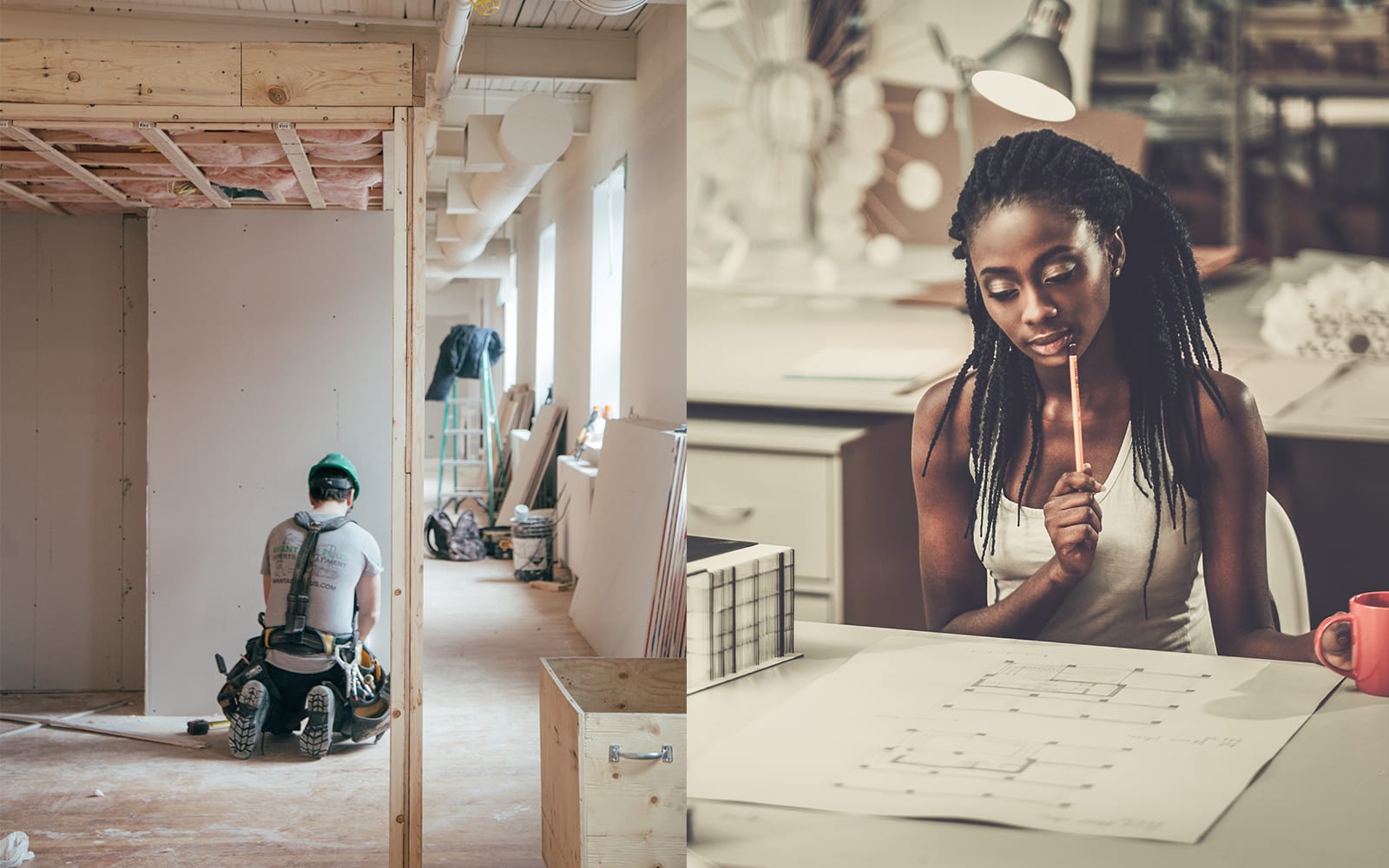
Toward the end of last year, Holly Briggs, Managing Principal at IA’s Washington, DC office, was a panelist at the closing general session (focused on design excellence) of the Design-Build Institute of America’s (DBIA) Design-Build Conference and Expo. For those not familiar with Design-Build, this increasingly popular project delivery process employs a single contract to provide design and construction services. Typically led by the general contractor, there is one entity, one contract, and one unified flow of work from concept through completion. The traditional project delivery process requires two contracts, one for the designer and another for the contractor.
For a short Q&A to find out more about the design-build model, we caught up with Holly, whose design-build experience includes headquarters for large government and state agencies as well as private sector clients.
[IA] DBIA supports a set of principles and best practices known as “Design-Build Done Right®.” Among those best practices is the belief that owners have a responsibility to create an organization that supports the successful procurement and execution of a design-build project. What does that actually mean?
[HB] It means that the owners’ have a responsibility to define accurately, realistically, and honestly their objectives in executing a design-build project. They need to clearly articulate whether their purpose for using the model is to reduce risk, to reduce cost, or if they just believe the design-build process is a better delivery system. To ensure that the focus of the effort and the decision-making process supports and informs the owner’s goals and meets expectations for a successful project, it’s important that the entire team understands the owner’s objectives and drivers.
One of the best things about the design-build process is that everyone is on the same team. Everyone is hired together and shares the objectives that the client has articulated to guide the process. Setting the tone for the team dynamics and ensuring that everyone has a voice at the table is a critical component for the success of any project. Honestly, you get some very interesting perspectives on problem-solving from disciplines that would not normally even be in the room if the design-build model were not being used.
[IA] DBIA believes that design-build project delivery is well-positioned in every way to deliver Design Excellence. While there are varying definitions and perspectives on design excellence, certainly we all agree that design excellence should be the goal of every project. What in your view needs to happen to achieve design excellence in a design-build environment and ensure that design doesn’t take a back seat?
[HB] To achieve real design excellence there would need to be a rethinking and broadening of the design-build approach. Right now the focus and drivers of the design-build selection process are budget and schedule.
This is really magnified on government projects where budgets are frequently based on historical data in a market and submitted for approval of funding sometimes years before the project start date. Then the program and design excellence goals are developed and frequently GSA P-100 guidelines are then overlaid. The result is a misalignment of the project goals and requirements with the budget before the project even starts.
Specifically, from an interiors perspective, we are the tail on the dog. I have worked on several design-build renovation projects that were touted as focused on design excellence and simply ran out of money to deliver the interiors portion originally envisioned and planned. The base building had some unforeseen conditions and the infrastructure ran over the allocated budget, so the budget was stripped and the interiors took the hit. We barely delivered a basic tenant build-out; there was no design excellence.
So I do think there are some inherent issues with delivering design excellence in this manner. Not insurmountable, but right now not always easily achievable.

[IA] Successful teaming and collaboration is a hallmark of design-build. From your perspective, what does successful teaming and collaboration look like?
[HB] There are very different team dynamics on a design-build project than on traditional delivery teams. With traditional delivery, even though you are all working on the same project, there isn’t a contractual arrangement linking all of the stakeholders through the client/owner. So you have competition for positioning among the different entities to get the ear and trust of the client/owner and influence decisions and outcomes. The dynamic can become one of competing values and agendas. Stakeholders can become territorial, creating tensions and conflict that negatively impact the product and delivery.
From my perspective, successful teaming and collaboration on a design-build project really starts with and is founded in mutual respect. For the process to work effectively, from the very onset of project pursuit, every team member must be seen as a partner.
As an example of successful teaming, we were on a very large design-build project and the owner changed the program right at the end of the construction document (CD) phase. With a traditional delivery process, this would have set the project back six months, revising the program, making the design changes, and then revising the CD set. But with the structure of the design-build team, we were able to take a different approach. What we brought to the table was an approach that treated the CD set as as-builts. By doing that we were able to provide sketches of the changes to the contractor, keep the project on schedule, and meet the new client requirements. This would not have been possible with a traditional delivery process.
[IA] What one piece of advice for success would you give design firms new to design-build?
[HB] I would definitely say have an open mind about the process. If you are on a good team with a contractor that has team members experienced in delivering projects using this model, the experience can be extremely positive with great team dynamics and overall a more integrated and predictable process than traditional delivery.
As a word of caution, I would add, understand your contract. Understand your obligations, how risk is being allocated between parties, and the contractual liability of the designer for problems, including delays during execution. If you don’t understand your risk and liabilities, you can end up in a world of hurt.
IA is a global firm of architects, designers, strategists, and specialists. We focus exclusively on environments through the lens of interior architecture—a radical idea in 1984, when IA was founded. We are highly connected agents of change, committed to creativity, innovation, growth, and community.
IA is a global firm of architects, designers, strategists, and specialists. We focus exclusively on environments through the lens of interior architecture—a radical idea in 1984, when IA was founded. We are highly connected agents of change, committed to creativity, innovation, growth, and community.

